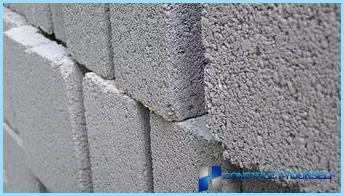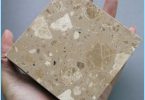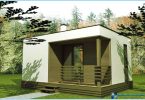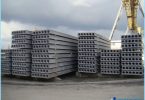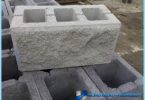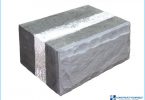The contents
Cellular concrete is a type of lightweight concrete. He is a construction man-made material with a porous structure. To create aerated concrete use siliceous fillers binders and mineral substances.
The use of this material ↑
Cellular concrete is used in the following construction works:
- It is used mainly for building insulation.
- This type of concrete is required for attic insulation and concrete slab.
- Such material is necessary for the organization of the layer of insulation in wall multilayer structures.
- High-temperature types are needed as insulators in industrial equipment, capable of withstanding temperatures up to 700 degrees.
The cellular concrete blocks have become popular in wall construction. From cottages, townhouses, country houses, was constructed with the use of this material, perfect heat settings. The blocks not only not inferior to the classic bricks, but significantly higher than its calorific value parameters, as they have the correct geometry. The margin of error blocks does not exceed 2 mm, therefore laying can be carried out with the help of special construction glue, making the layer not more than 3 mm. In Russian manufacture of cellular concrete is carried out according to GOST 25485-89.
Classification of material ↑
Standard of quality all cellular concretes are divided according to the following criteria:
- use;
- the options for getting your pores;
- used wagamama substance;
- mind siliceous component;
- the mechanism of hardening.
Considering the functional purpose, we can distinguish the following types of cellular concrete:
- The insulating form. This material is used as insulating construction element. The bulk density of such concrete 300-500 kg/m3.
- Structural variant used in the creation of structural parts of buildings and buildings of different types.
- Structural and insulation view, containing in itself both properties.
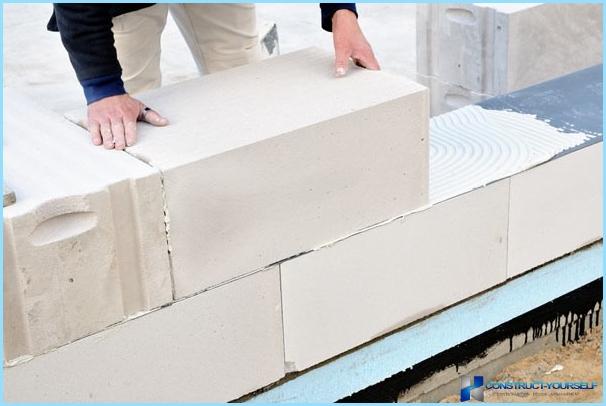
Types of cellular concrete for porosity: ↑
- cellular aerated concrete and silicate;
- the silicate and concretes;
- inosilicate and foam concrete.
In the manufacture of this building material, employing a variety of binding components: cement, lime, gypsum.
As the siliceous component parts are: ash, slag from steel production, quartz sand.
The option of hardening: ↑
- allocate autoclave, which hardens in the environment of saturated steam at a pressure above atmospheric;
- non-autoclave hardening under natural conditions using electrical heating either at atmospheric pressure in the environment of saturated steam.
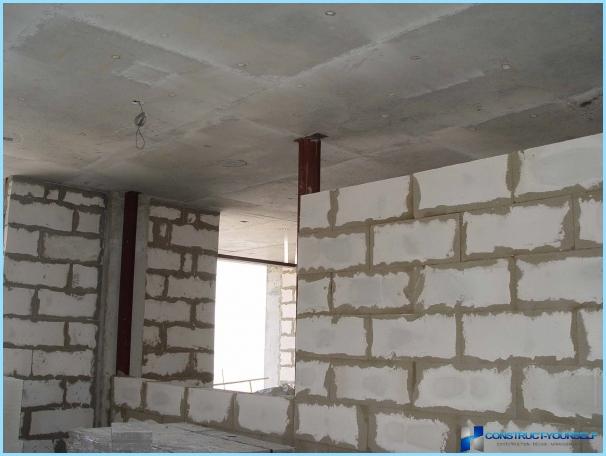
What is the term «cellular concrete» ↑
This term includes several building materials which have similar properties (structure), that is, have a cell.
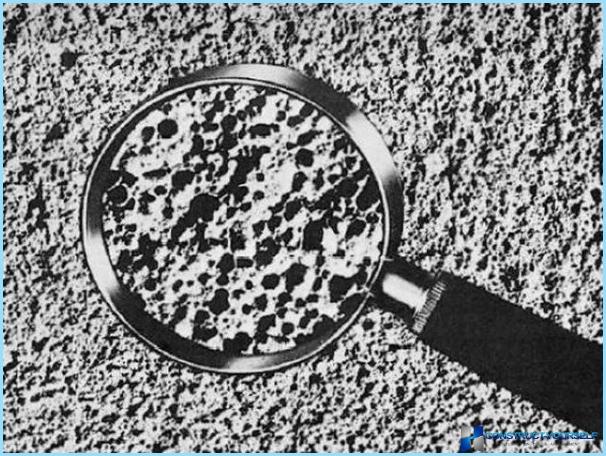
Physico – mechanical and operational parameters of such materials is similar to ordinary concrete, but in foam form. The presence of the porous structure reduces the density of the concrete reduces the weight of the final product.
Among the varieties of cellular concrete are:
- concrete;
- foam.
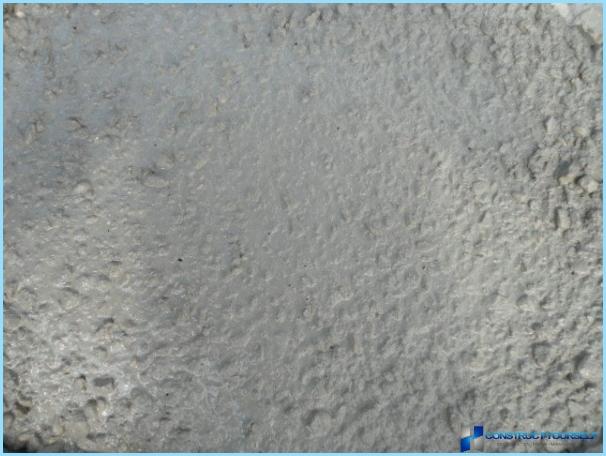
The main advantages of the material ↑
Currently, many builders give their preference to cellular materials. The reasons for this choice are obvious:
- Natural material difficult to process, transformation, and mesh blocks created by man, can be easily machined. The implementation in the construction industry innovative technologies help to constantly improve the operational characteristics of concrete, to increase the efficiency of its application.
- This material has amazing heat insulation characteristics. Inside there is air, exhibiting excellent thermal insulation properties. The house, built with the use of porous concrete will be warmer than the house, made of natural wood or brick.
- The cellular structure of this material gives it good sound insulation characteristics.
- The composition of the material only the mineral components, so the concrete does not rot.
- These materials do not include toxic substances, safe for human, environment.
The disadvantage of this material is that the structure of cellular blocks need extra protection from the elements. Gusts of wind, heavy rain, can cause destruction of the material.
The cellular concrete blocks ↑
They are considered as lightweight concrete, in the structure there are many closed pores (up to 80% of the total volume of the unit cell have a size of 0.5 – 2 mm), cement, sand, water, various technological components. Subdivide a few modifications:
- penosilikatnymi;
- concrete;
- foam.
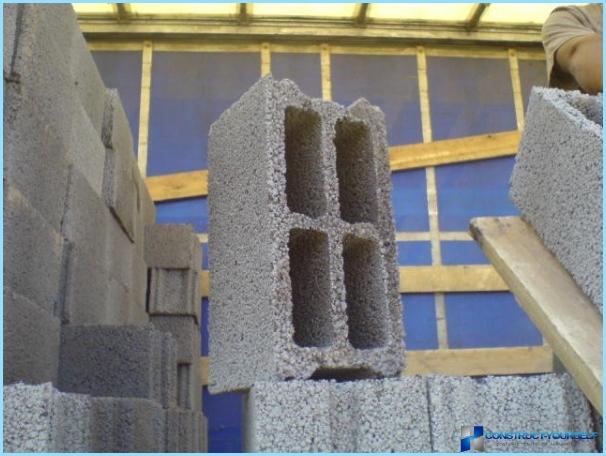
The technology of manufacturing honeycomb structures: ↑
- Create a similar shape using a special foaming agent. Placed mixture of cement, water, sand, foaming agent in a container, stirred using a mixer, poured into molds. For 8-10 hours formed cells, the mixture solidifies, blocks ready to use.
- Cellular concrete forms create without the use of a blowing agent. In such a material the pores appear as a result of chemical reactions between quicklime (calcium oxide) and aluminum dust. Aluminium, concrete, sand, cement mix, distribute on the finished forms. After 2-3 hours starts the initial setting of the blocks. The final drying of the forms is carried out in an autoclave using a pressure of 12 bar, temperature of about 200 degrees Celsius.
- In the manufacture of aerated concrete blocks are autoclaved method. The appearance of foam is the result of chemical interaction. As the filler used quartz sand.
- Penosilikatnymi blocks produced from cement, water, sand, foaming agent. It gives the material a porous structure, contributes to the formation of large cells.
- Aerated blocks are the result of blowing off under high pressure air through the mixture. With gradual lowering of pressure to achieve saturation of the composition of bubbles, the result after complete drying of the material a cellular structure.
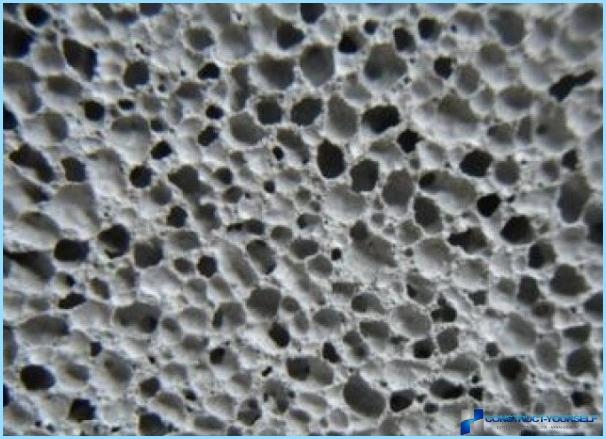
Varieties of cellular units ↑
There is a difference in density of the blocks, their form, considering the brand of the product.
The density of the block made of cellular material, has a brand in the range D300 – D1200. These figures characterize the specific weight of 1 m3 block.
Using the autoclave method receive blocks of regular geometric shape, so no need to use cement mortar for laying products. Fixation blocks possible with a special adhesive layer, which is only 2-3 mm.
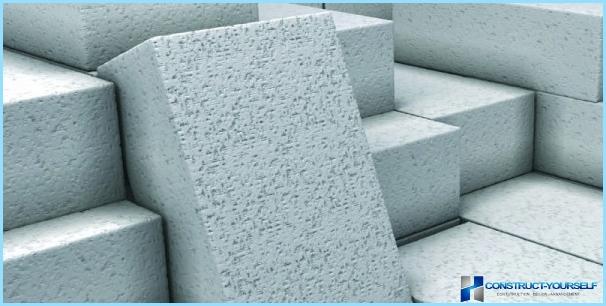
Characteristic sizes and shapes of products ↑
These products have the form of a right parallelepiped, they correspond to GOST 21520-89. Most often in the construction of bearing walls use the blocks with the parameters 400х200х200 mm and mm. 600х300х200 Less massive blocks chosen for the construction of interior floors.
- The blocks have a density in the range 35 – 150 kg/cm2, the rate depends on the type and density.
- The thermal conductivity depends on the density presented in the range of 0.11 – 0.16 W/m. grad
- The blocks have shrinkage deformation during drying is about 0, 35 – 0,47 mm/m.
- Fireproof performance shall comply with the GOST 30244-94.
- The absorption coefficient of water for foam concrete are presented in the range 12 – 70%, for aerated concrete – 20-35 %.
- The price of units is determined by their density, an average of 1 m3 will be 2300-3500 rubles.
The advantages and disadvantages of cellular forms ↑
The advantages of cellular forms include:
- a harmonious blend of natural wood and stone;
- performance: compressive strength, resistance to humidity, non-combustibility, ease of handling, low weight, low thermal conductivity;
- the house, built of such blocks, received positive reviews in different climatic zones, create an excellent microclimate;
- units are able to withstand all floors, suitable as insulation in the construction of composite walls;
- there is no need to carry out additional measures to improve sound insulation in the room;
- due to the blocks laying on a special adhesive composition made from dry mixes, you can avoid «cold bridges»;
Disadvantages of cellular forms are:
- fragility;
- lack of strength.
If you correctly calculate the design, it is possible to remove such defects, to guarantee the strength and durability of constructed structures.
The specifics of moving products ↑
Transportation is carried out by rail or automobile transport. For the safety of the blocks, finished products are placed on special pallets, pack with plastic film.

